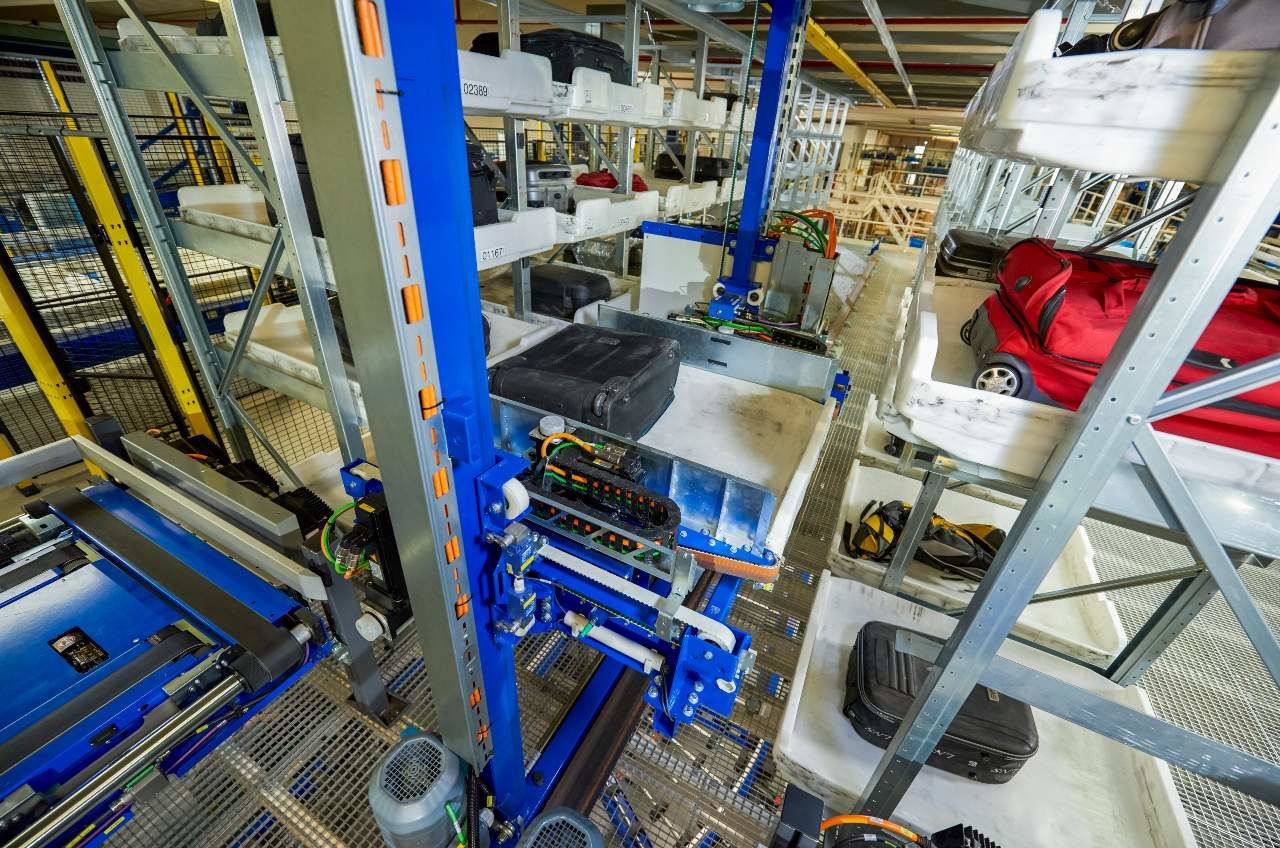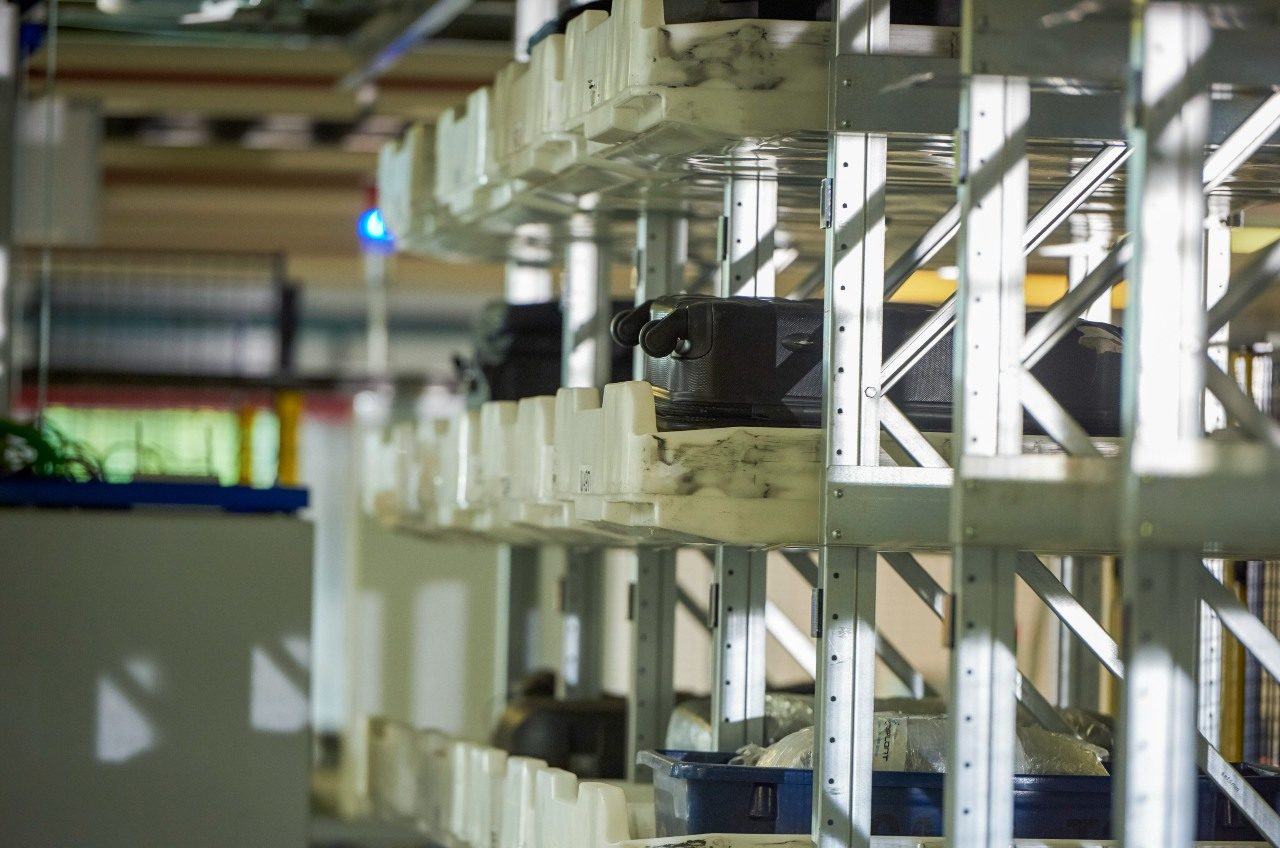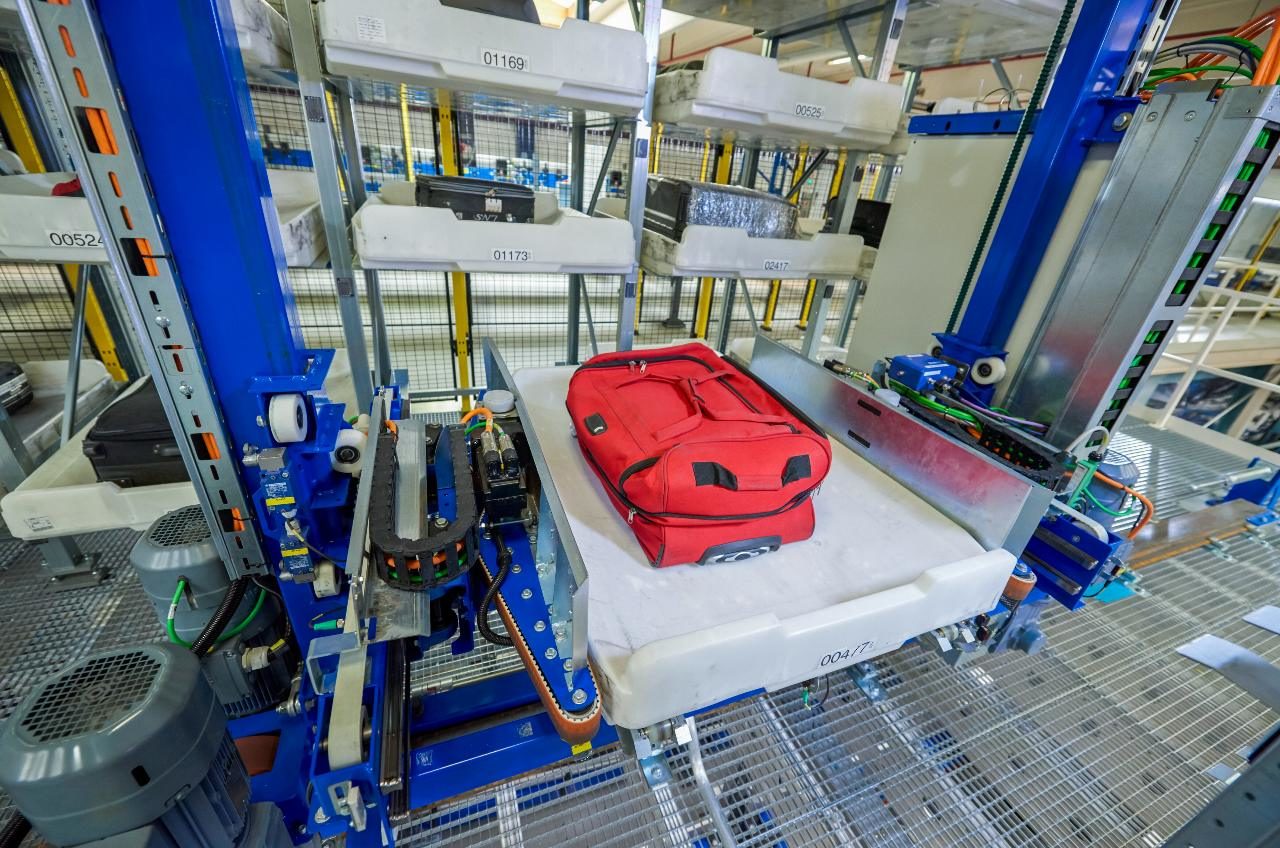So, what does dynamic baggage storage look like?
With batch building and racking, EBS systems can be transformed into multi-bag stores. Rather than just being used for storing early bags, EBS systems can be fully multi-purposed into dynamic storage systems.
Let’s take Bergen Airport in Norway as a great illustration. It is one of the first airports to install BEUMER Group’s CrisStore® system and make full use of the flexibility of dynamic storage in their operation. This rack-based storage with CrisStore at Bergen Airport features the following:
- A staging area for assembling bags into batches
- A pull system with a highly flexible out feed
- Tracking and retrieval of single bags or batches of bags for specific flights
- Racking and capacity configured to fit the airport
- A speed-loading position manned only when recalling batches of bags
- Enables check-in of bags up to one day prior to flight
At Bergen, bags are routed into the dynamic storage which is monitored and controlled by the baggage handling system controls and linked to ground handler planning via a workstation. When the display shows that there are 40 bags ready for a single flight, the handler can request the bags from the store, as a batch, to fill a single ULD or dolly. The system incorporates 100 percent tracking which allows operators to retrieve any bag at any time, as well as ensuring accurate real-time inventory control.
Given its modular construction, it’s possible to expand the capacity of the system for more storage, while providing a fall-back option during a system failure. It also interfaces well with existing systems.
Download the whitepaper “The ultimate Baggage Handling System pulling airports into the future.”
The benefits of multi-purpose storage for an airport
So, what do airports stand to gain from evolving their conventional EBS systems into multi-purposed storage systems? The biggest advantage is the efficient use of floor space in the baggage hall that comes with handling baggage only when needed or when ready. This avoids the need to keep baggage randomly transported in loops that takes up space and capacity.
With multiple-use storage also comes the possibility to store not only early bags, but empty totes and even goods for the retail area. Further, batch building or on-demand storage is possible, along with storage for reclaim on-demand bags that need to wait in the system until the passenger calls for them. What’s more, the system generates a more efficient use of the operator’s time.
Conclusion
Dynamic multi-use storage offers airports a great way to transform their existing EBS system or introduce a baggage storage with a difference. They can take advantage of increased storage capacity, better use of airport building space and the increased efficiency it offers its operational baggage management.


















